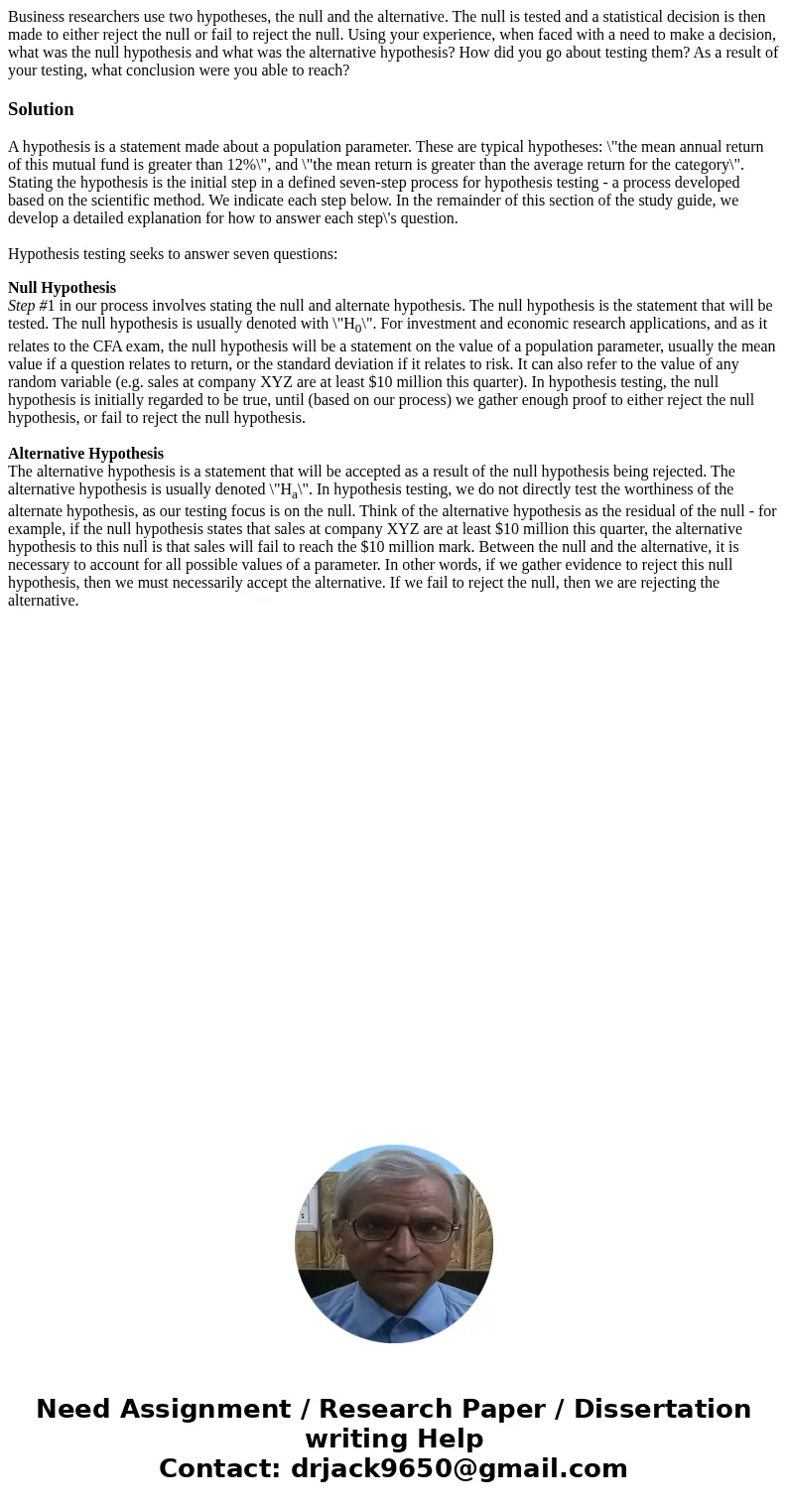Business researchers use two hypotheses the null and the alt
Business researchers use two hypotheses, the null and the alternative. The null is tested and a statistical decision is then made to either reject the null or fail to reject the null. Using your experience, when faced with a need to make a decision, what was the null hypothesis and what was the alternative hypothesis? How did you go about testing them? As a result of your testing, what conclusion were you able to reach?
Solution
A hypothesis is a statement made about a population parameter. These are typical hypotheses: \"the mean annual return of this mutual fund is greater than 12%\", and \"the mean return is greater than the average return for the category\". Stating the hypothesis is the initial step in a defined seven-step process for hypothesis testing - a process developed based on the scientific method. We indicate each step below. In the remainder of this section of the study guide, we develop a detailed explanation for how to answer each step\'s question.
Hypothesis testing seeks to answer seven questions:
Null Hypothesis
Step #1 in our process involves stating the null and alternate hypothesis. The null hypothesis is the statement that will be tested. The null hypothesis is usually denoted with \"H0\". For investment and economic research applications, and as it relates to the CFA exam, the null hypothesis will be a statement on the value of a population parameter, usually the mean value if a question relates to return, or the standard deviation if it relates to risk. It can also refer to the value of any random variable (e.g. sales at company XYZ are at least $10 million this quarter). In hypothesis testing, the null hypothesis is initially regarded to be true, until (based on our process) we gather enough proof to either reject the null hypothesis, or fail to reject the null hypothesis.
Alternative Hypothesis
The alternative hypothesis is a statement that will be accepted as a result of the null hypothesis being rejected. The alternative hypothesis is usually denoted \"Ha\". In hypothesis testing, we do not directly test the worthiness of the alternate hypothesis, as our testing focus is on the null. Think of the alternative hypothesis as the residual of the null - for example, if the null hypothesis states that sales at company XYZ are at least $10 million this quarter, the alternative hypothesis to this null is that sales will fail to reach the $10 million mark. Between the null and the alternative, it is necessary to account for all possible values of a parameter. In other words, if we gather evidence to reject this null hypothesis, then we must necessarily accept the alternative. If we fail to reject the null, then we are rejecting the alternative.

 Homework Sourse
Homework Sourse